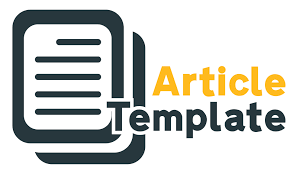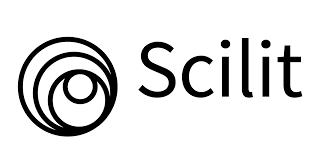The Responses to Wh-Questions in the Journalism Course of Students at Universitas PGRI Sumatera Barat
DOI:
https://doi.org/10.38043/commusty.v3i1.5054Keywords:
Wh-Questions, Journalism, ResponsesAbstract
The purpose of this study was to understand how journalism students apply the 5w 1h response in their news writing. This study is a qualitative study. The data source of this study is the thematic text in the mid-semester exam of journalism students in 2021.Data was collected by analyzing the students' test text using the document checklist. Let it be, there are six uses to be seen, the answers being what, who, where, when why and how. The results showed that out of 16 news tests taken by students, only 6 students fully answered factor 5w 1h. While the other 10 people did not answer all the items 5w 1h in their article, 2 people did not answer how, 4 people did not answer why, 1 person did not answer who, 4 people did not answer when. Meanwhile, everyone answers what and where. The data reveal why these ten news reports were incomplete, because their reports focused not on a single event but on two or three events that they mentioned in their reports. These students do not start the newsletter with important information but discuss other related topics besides current events. As a result, the discussion in the newsletter is not focused and therefore the 5w 1h factor is no longer taken into account.
References
de Moura Menuzzi, S., & de Ávila Othero, G. (2007). Functional constraints on wh-question formation. English, 1–15.
Deuze, M. (2019). What journalism is (not). Social Media and Society, 5(3), 0–3. https://doi.org/10.1177/2056305119857202
Dua, M. (2020). Unit 1 news-definitions, concept and principles. In Unit-1 News Definitions, Concept and Principles (pp. 7–19). Indira Gandhi National Open University, New Delhi. http://egyankosh.ac.in//handle/123456789/57072
Finkbeiner, R. (2020). Wh-headlines in German: What they communicate and whether they optimize relevance. Scandinavian Studies in Language, 11(1), 146–169. https://doi.org/10.7146/sss.v11i1.121364
Hamborg, F., Breitinger, C., & Gipp, B. (2020). GiveMe5W1H: A universal system for extracting main events from news articles. CEUR Workshop Proceedings, 2554, 35–43.
Hameed Al-Hindawi, F., & Huwail Ghayadh, H. (2017). Topicality as war news value: A pragma-linguistic study. International Journal of Applied Linguistics and English Literature, 6(5), 279. https://doi.org/10.7575/aiac.ijalel.v.6n.5p.279
Harcup, T., & O’Neill, D. (2017). What is news?: News values revisited (again). Journalism Studies, 18(12), 1470–1488. https://doi.org/10.1080/1461670X.2016.1150193
Islamia, J. M. (2016). Research design. In Research in Social Science: Interdisciplinary Perspectives (pp. 68–84). file:///E:/Documents/dosen/buku Metodologi/[John_W._Creswell]_Research_Design_Qualitative,_Q(Bookos.org).pdf
Karmas, C. (2015). No news is bad news: Active learning saves newswriting. International Journal of Arts & Sciences, 8(6), 69–84. http://publishing2.com/2008/12/08/crowdsourcing-citizen-journalism-and-the-lesson-of-scrapbook-news/.
Liu, X., Li, A., & Jia, Y. (2016). How does prosody distinguish wh-statement from wh-question? A case study of standard Chinese. Proceedings of the International Conference on Speech Prosody, 2016, 1076–1080. https://doi.org/10.21437/speechprosody.2016-221
Magilvy, J. K., & Thomas, E. (2009). A first qualitative project: Qualitative descriptive design for novice researchers. Journal for Specialists in Pediatric Nursing, 14(4), 298–300. https://doi.org/10.1111/j.1744-6155.2009.00212.x
Neil, W. O. (1991). Lisa Cheng_PhD thesis. 1985.
Posetti, J., Ireton, C., Wardle, C., Derakhshan, H., Matthews, A., Abu-Fadil, M., Trewinnard, T., Bell, F., & Mantzarlis, A. (2020). Journalism, ‘fake news’ & disinformation: Handbook for journalism education and training.
Schultz, I. (2007). The journalistic gut feeling: Journalistic doxa, news habitus and orthodox news values. Journalism Practice, 1(2), 190–207. https://doi.org/10.1080/17512780701275507
Shaw, D., Bennett, J. G., Moynihan, D. P., Hewitt, D., Lippincott, S., Leavitt, R. K., Canby, P., & Stephens, B. (n.d.). Just the facts. In this Chapter.
Van Der Haak, B., Parks, M., & Castells, M. (2012). The future of journalism: Networked journalism. International Journal of Communication, 6, 2923–2938.
Stephens, M. (1997). A History of News: From the Drum to the Satellite. Viking.
Downloads
Published
How to Cite
Issue
Section
License
Copyright (c) 2024 Rani Autila

This work is licensed under a Creative Commons Attribution-ShareAlike 4.0 International License.















